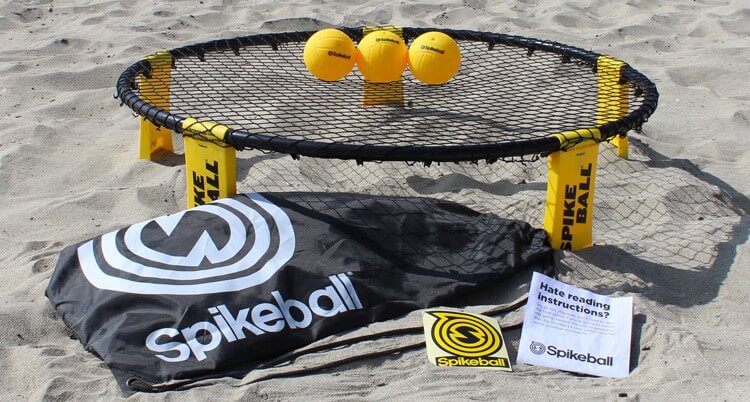(This essay was originally published on SHAPE America’s member Exchange [October, 2015] and is reprinted with permission.)
Heard about the new math? Well here it is: PE + HE + PA = 50MS, specifically designed for public school health education and physical education teachers. SHAPE America recently announced its intent to get all of America’s students physically active and healthy within the next 14 years. The shorthand for this is “50 Million Strong by 2029” or even shorter “50 Million Strong (50MS).”
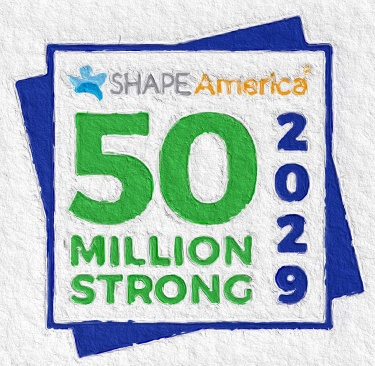
We launched 50MS nationally in the Miami-Dade County School District last month. Superintendent of the Year Alberto Carvalho endorsed the goal and proudly spoke about the success of his own district’s physical education program – the fourth largest in the nation. You can read more about this event here. Beyond the attendance of various dignitaries, the event was highlighted by the presence of a small group of smiling preschoolers wearing 50 Million Strong shirts. It’s this group of students who will be graduating high school in 2029, and these are the ones we have to make sure have the skills, knowledge and desire to stay physically active and make healthy lifestyle choices.
Back to the Future and Beyond
Writing this essay took me back in time. It involved a jump-around process blending my thoughts on past events and imagining physical education’s future. It all began with a comment from my wife who at the time was an elementary and high school principal. It was the best of both worlds. While I was teaching I was hearing an administrator’s perspective as each year progressed. But one day she commented that PE was on the wrong track. This got my attention. What did she mean? She explained, “I want to know the numbers!” In other words, what were my measurements of success? Where was the evidence? How did I know that what I was doing was having any impact on the well-being of my students after graduating from high school? It’s these questions that continue to haunt our profession today.
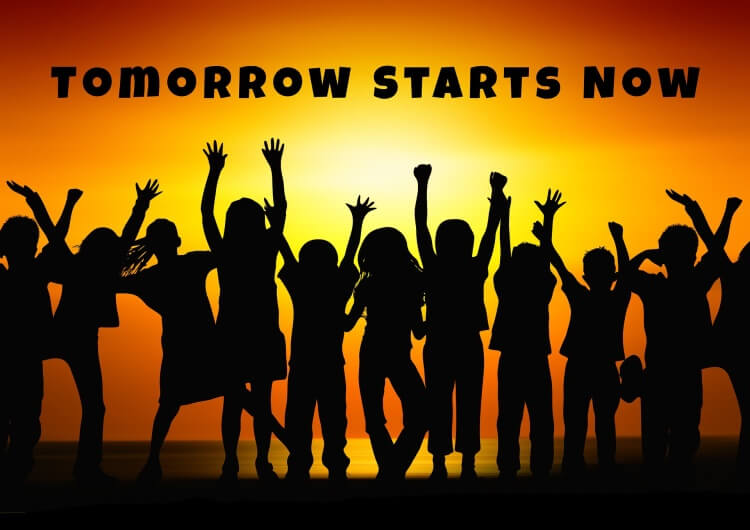
In recent years, the value and quality of physical education has advanced as a result of the brain research findings and technological advances. Many of our colleagues are using this information and equipment to support their teaching. But as we all know, there are still far too many physical educators who either don’t care or are uninformed. Not surprisingly, the result is that physical education too frequently gets a bad rap from outsiders. Something is clearly missing. What can be done? To me, one key solution is to improve advocacy and to increase the sharing of information.
It all starts with professional preparation and the college experience of future teachers. I can remember that one of the classes I was required to take explained how to integrate PE with the so-called core subjects. At that time this was an idea bordering on heresy! But to make a long story short, it ended up saving my job and started a new era of respect for PE in my school that continued for the 36 years of my public school teaching career.
The Fall and Rise of Physical Education
pelinks4u is delighted to share a perspective on the state of today’s physical education by George Graham. As one the profession’s most innovative thinkers, George categorizes the different teaching approaches of our teaching colleagues and tells us what he thinks of them. Shared with you courtesy of PE Central
Click this link to download a PDF file. Be patient, it might take a minute or so!
Be a 50 Million Strong by 2029 Champion – Part 2
(Editor’s Note: This is the second of a three-part series in which Angela shares the strategies that she has used to get her students physically active and healthy. Be sure to check the other issues of pelinks4u to learn about additional strategies.)
The U.S. Department of Health and Human Services recommends that children and adolescents aged 6-17 participate in 60 minutes or more of physical activity each day (CDC, 2015). In recent years schools have been called upon to expand their efforts to increase physical activity opportunities. In the last issue, I shared some of the ways that I helped my school reach these goals. I gave details about events that took place in my physical education program, which helped motivate my students to be more physically active. Although I found success in my physical education program in getting kids more active, I realized to help the children I taught reach the goal of 60 minutes a day, they would need more time to be physically active outside of my physical education class. Here are some examples of the ways I achieved this before, during, and after school.
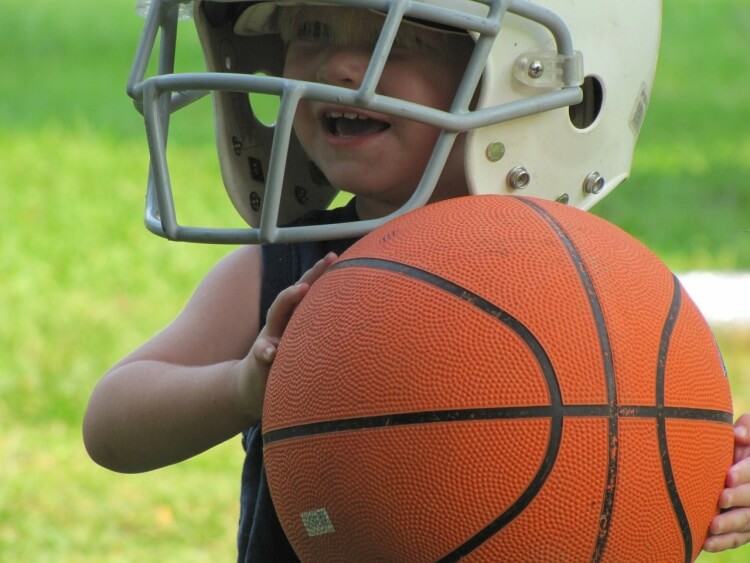
Physical Activity During School
The End of Physical Education as We Know It
Got your attention? Okay, the topic sounds kinda scary but read on to get what I mean. If you’ve followed SHAPE America’s news you’ll know about the “50 Million Strong by 2029” target. To recap, our national professional society has set the goal of getting every student attending America’s preK-12 schools physically active and healthy by the time they graduate in 14 years. It’s a pretty bold and maybe in some minds crazy goal. Imagine, every student – about 50 million of them – living healthy lives that embrace regular physical activity. That’s a heck of a long way from where we are today.
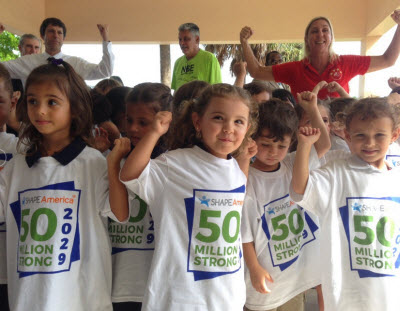
Of course it’s not hard to imagine some of our students getting there. You know, the ones already pretty active, got the good genes, whose parents encourage them to play sports, who weren’t born with any kind of disability. Those ones. But what about the rest? The kids – and there are far too many of them – whose childhood is a constant struggle: Difficult living conditions, abuse, poverty, hunger, and little encouragement to take school or learning seriously. How on earth are we going to get those kids to choose to be physically active and to make healthy lifestyle choices in the daily chaotic world in which they live? Wish I knew. But what I do know is that all of us need to get together to solve this challenge because the alternative is going to be disastrous for us personally and nationally.
It’s not just a physical education challenge helping to prepare America’s youth for successful lives. But we need to do our part. And that’s why physical education as we know it has to change. It’s not that any of us haven’t been trying. We have. If anything the problem is that we have been guilty of trying to do too much. We all know that movement is a wonderful medium for learning and personal development. Math, reading, writing, art, pretty much anything can be effectively learned through movement. Play, games, dance, sports are among the most effective ways to develop social, emotional, intellectual, ethical, and physical skills. Not much argument here. But the problem is physical educators can’t do all this alone. We’ve tried and it just doesn’t work. It’s not hard to understand. We simply don’t have enough time.
Get HyPE: Designing #PhysEd Rubrics in Four Easy Steps
The purpose of my Get HyPE column is to raise and discuss topics that will excite and inspire the physical education community. My goal is to encourage you to think about or try something new every month. The name of the column also has a secondary meaning. It includes the name my students call me, “G-H,” and the abbreviation for physical education, “PE.”
What’s keeping me going these days? Rubrics. I’m obsessed with them. I can’t stop thinking about them. I can’t stop designing them. They’re pushing my teaching practice, they’re helping me authentically assess my students’ learning, and they help me focus on exactly what I want my students to learn each day. Recently, my friends on Twitter have asked me where I get my rubrics. For the most part, I design them myself using four easy steps.
My teaching environment doesn’t allow me to look too far ahead when it comes to planning. I share my teaching spaces with three other physical educators, and we rotate through the spaces on a seven or ten day cycle. Sometimes my plans work flawlessly and sometimes they change unexpectedly. Take today for example: While my school’s field was being re-seeded I planned to have my 6th grade students play a Spikeball ladder tournament on the grass next to the school. Right when I finished explaining what we were doing I heard, “Sputter, Sputter, SPRAY.” The sprinkler system turned on! Change of plans. Move the Spikeball games to the sidewalk. The balls kept rolling into the street. Change of plans. Move the Spikeball games back to part of the grass that wasn’t soaked. The sprinklers turned on again. Change of plans. But what? With nowhere else to go, I moved my students to the wet grass and completely modified the rules. They were safe, had a great time playing, and at the end of class we had an amazing discussion about how we can control where the ball goes by changing the force and angles of our hands and striking implements.
Psychological Skills Training: Communication
Continuing our Psychological Skills Training series in pelinks4u, this month’s article is written to help coaches improve their communication skills. If you coach you can use this information to improve your own communication skills. If you are responsible for preparing others to coach, use the following notes as the basis for leading an in-service training experience.
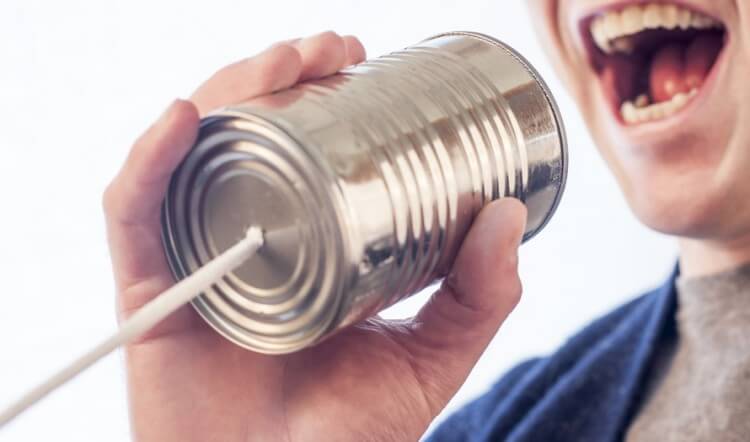
Introduction to Coaches:
- Communication skills may be the best predictor of coaching success.
- Coaches talk, read, write, gesture, listen, teach, console, persuade, demonstrate and observe.
- Coaches communicate with athletes, parents, administrators, officials, other coaches, athletic trainers, the media, support staff, fundraisers, etc.
- Common communication mistakes include:
- Making comments you regret
- Expecting others to read your mind
- Talking more than listen
- Expecting athletes to respond well to criticism while not being open to feedback yourself
- Assuming you know what someone else is thinking and/or feeling
